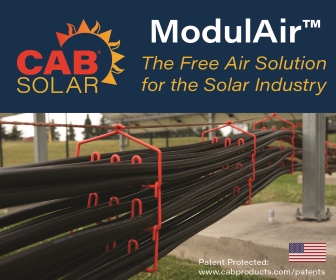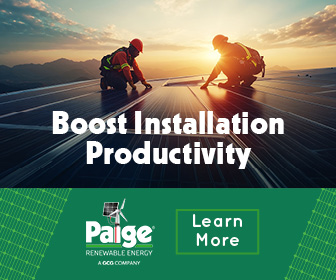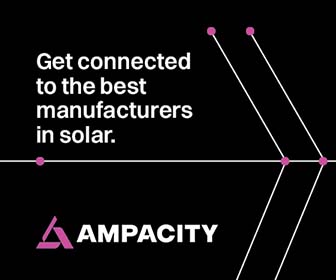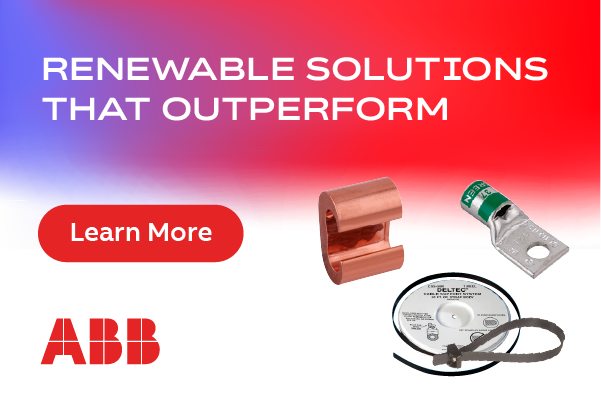Solar Rooftop Installations Demand Safety
Solar power systems have experienced widespread popularity and growth in recent years. In 2010, less than 2,000 MW of solar power was installed and in 2014 it was projected that over 7,000 MW would be installed. As solar becomes more affordable, more businesses are utilizing it as a way to “go green” and reduce electricity costs. However, installing a solar power system in a place of business may not be as easy as it seems. In fact, one aspect of installation - safety - is critical, not only to ensuring long-term output of the array but also to keeping the building and workers out of harm’s way.
The following safety issues should be accounted for before any construction begins:
- Is the roof strong enough to support the array?
- How should the solar panels be arranged to maintain accessibility?
- What is Arc Fault Technology and why is it necessary?
- Can power be shut off from the array to the building from the electrical service to prevent electrical shock hazards?
- Do the solar panels remain energized even after power has been disconnected?
There are three main locations that solar arrays are installed: rooftop, ground, and parking canopy. A ground or parking canopy system is not attached to a building and generally poses little risk to the building or occupants. However, the opposite is true of roof-top mounted systems and safety issues related specifically to these must be addressed.
When the decision has been made to put a solar array on the roof, it is critical that a full analysis of the roof be completed. This analysis should include a review of the existing roof, a structural analysis of the building and roof, and which racking method works best for the structure. This analysis should answer questions such as:
- How old is the roof?
- Will it sustain for the life of the solar array?
- If the system requires roof penetrations, how will this affect the integrity of the roof?
Without a structural analysis, customers risk problems as minor as a roof leak to as severe as a roof collapse. A structural analysis of the additional roof loading should be performed by a professional engineer, including the new load imposed by the modules, possible snow drift, and additional wind loading which transfers to the structure.
Why is it important to arrange the solar panels properly? From a fire safety standpoint, aisles and walkways should be incorporated for emergency responders. For example, if a rooftop penetration is required for ventilation in order to fight a fire, it may not be possible if the roof is entirely covered with solar panels. Arranging the panels in arrays which are wired separately also allows for individual sections to be isolated. This reduces the number of live conductors which are exposed to emergency personnel.
Arc Fault Technology allows the system to operate while simultaneously monitoring the direct current (DC) conductors coming from the panels for arc fault, reducing the possibility that a fire will start. This new technology is now available and required by the National Electrical Code (NEC) for all solar array wiring installed on or in a building. The Arc Fault Circuit Interrupter (AFCI) capability is tested as part of a system’s commissioning and thereafter as part of a maintenance package. When implemented correctly, the Arc Fault Technology will not only de-energize the photovoltaic (PV) circuit, but will also have the capability to alert the maintenance provider of a tripped circuit. Any areas not effected by the Arc Fault will continue normal operation.
Electrical shock while extinguishing a building fire is a realistic fire-ground hazard. A critical task during fire-ground operations at any building fire is to shut down the utilities, including the electrical utilities to remove electrical shock hazard. This is a relatively straightforward, one-step process for a building receiving electrical power from the local community’s power grid. However, it becomes considerably more challenging when multiple sources provide electrical power (i.e. distributed power generation or a building equipped with a PV power system). AFCI Technology and knowing the proper shutdown procedure gives emergency responders confidence that they can be near equipment without the risk of electrocution while understanding that the panels themselves will always be live. Educating first responders gives them knowledge to be both safe and effective in the case of an emergency.
It is also important to recognize that there are two aspects of regulatory oversight yet to be resolved for the solar power industry: reliable methods for assuring qualified installations, and ongoing maintenance and long-term service. From the vantage point of building officials, electrical inspectors, and fire inspectors, solar power systems arguably should be addressed similar to other building systems that present potential hazards to the occupants or emergency responders. These other systems have requirements to assure quality installations and proper ongoing service. The present oversight of solar power systems is not as robust as with other similar building systems.
By choosing a credible installer and performing ongoing maintenance, the chances of a catastrophic failure are reduced. Ongoing inverter and wire maintenance, visual inspection for damaged conduits, panels, and vegetation growth are important tasks in maintaining the viability of the system.
Joe Camarota is an electrical systems designer for Ray Angelini, Inc., and a member of the Institute of Fire Engineers (MiFireE)
Mike Wessner is in sales and business development for Ray Angelini, Inc.
Chris Baralus, P.E., Ray Angelini, Inc.
Ray Angelini, Inc. (RAI) is an electrical contractor and solar provider that has been in business for over 40 years.
Ray Angelini, Inc | www.raiservices.com
Author: Joe Camarota, Mike Wessner, and Chris Baralus
Volume: May/June 2015








.png?r=6872)



